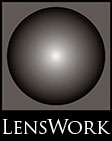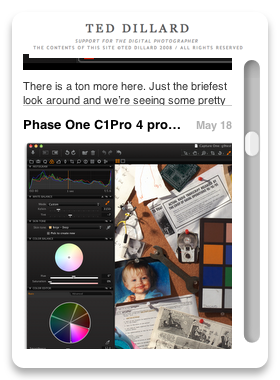The New Baryta Papers
 Bartya papers, harkening back to some of the glorious silver papers of the darkroom days, have very recently joined the inkjet printing arsenal. It’s big news.
Bartya papers, harkening back to some of the glorious silver papers of the darkroom days, have very recently joined the inkjet printing arsenal. It’s big news. Baryta is really simply another type of mordant (a substance that binds a dye or pigment to a a fabric or fiber material), it’s a barium-sulfate compound, again, much like a clay, bonded to a fibre-based paper substrate. It gives you a very high reflectance, thus a very bright white, without introducing optical whiteners. It’s a particularly helpful trick when it’s used on a flat, matte surface, either on a cellulose (standard wood-chip based), or on a 100% rag (generally referred to as acid-free, archival) paper, to enhance the contrast and dMax of the more absorbent paper bases. (The gloss papers have less of a problem with that, since the coating and even sometimes the base, often a plastic, performs much of the same function as the mordanting.)
Some current examples of Baryta papers are Epson Exhibition Fiber, Ilford Galerie Gold Fiber Silk, Hahnemüle Fine Art Glossy, and Harman Glossy Fiber Base AL, released in 2007. Although that’s quite a while, now, in digital years (very similar to dog years- one digital year equals about 5 years of normal technological development) the papers have been getting great reviews, and gaining a slow, but steady acceptance. Back to Mr. Jensen, the subject of the post where he mentions violins is precisely that- with the release of these new papers, he feel confident that he can produce a print of acceptably high standards, (his), using these new papers.
I have little doubt that you’ll see, within a fairly short time, a much deeper selection of Baryta papers available from many more vendors, including the printer manufacturers as well.
Harman Papers, by the way, is one of the places that Ilford put it's resources after they shut down their traditional darkroom papers line.
Labels: Baryta, inkjet papers, inkjet printers









